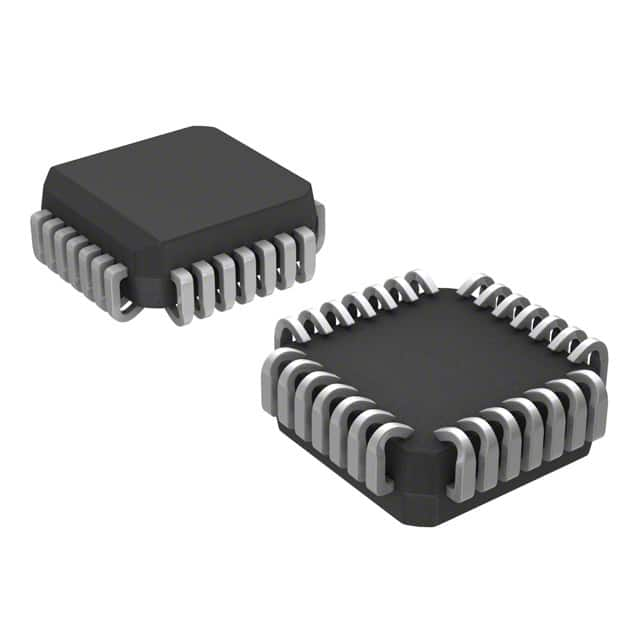Viz Specifikace pro podrobnosti o produktu.

MC10E158FNG
Product Overview
- Category: Integrated Circuit (IC)
- Use: Logic Gate
- Characteristics: High-speed, ECL (Emitter-Coupled Logic) technology
- Package: 20-pin PLCC (Plastic Leaded Chip Carrier)
- Essence: High-performance logic gate IC
- Packaging/Quantity: Available in reels of 250 units
Specifications
- Supply Voltage: -5.2V to -4.5V
- Input Voltage: -3.0V to -2.0V
- Output Voltage: -3.0V to -2.0V
- Operating Temperature Range: -40°C to +85°C
- Propagation Delay: 1.6 ns (typical)
- Maximum Clock Frequency: 500 MHz
Detailed Pin Configuration
The MC10E158FNG has a total of 20 pins, which are assigned as follows:
- VEE (Ground)
- Q0 (Output)
- D0 (Input)
- D1 (Input)
- D2 (Input)
- D3 (Input)
- D4 (Input)
- D5 (Input)
- D6 (Input)
- D7 (Input)
- D8 (Input)
- D9 (Input)
- D10 (Input)
- D11 (Input)
- D12 (Input)
- D13 (Input)
- D14 (Input)
- D15 (Input)
- Q1 (Output)
- VCC (Supply Voltage)
Functional Features
- High-speed operation: The MC10E158FNG is designed for high-speed applications, with a maximum clock frequency of 500 MHz.
- ECL technology: It utilizes Emitter-Coupled Logic, which provides superior noise immunity and high-speed performance.
- Differential inputs: The IC accepts differential input signals, allowing for improved noise rejection and signal integrity.
- Output enable/disable: It features an output enable/disable pin (OE) that allows the user to control the output state.
Advantages and Disadvantages
Advantages: - High-speed operation enables efficient data processing in time-critical applications. - ECL technology provides excellent noise immunity, making it suitable for noisy environments. - The differential input design enhances signal integrity and reduces susceptibility to common-mode noise.
Disadvantages: - Requires a negative supply voltage, which may limit compatibility with certain systems. - Limited availability of alternative models from other manufacturers.
Working Principles
The MC10E158FNG operates based on Emitter-Coupled Logic principles. It utilizes differential input signals and processes them through internal logic gates to generate the desired output. The high-speed operation is achieved by minimizing propagation delays and optimizing circuit design.
Detailed Application Field Plans
The MC10E158FNG finds applications in various fields, including:
- Telecommunications: Used in high-speed data transmission systems, such as fiber-optic networks and wireless communication.
- Computer Networking: Employed in routers, switches, and network interface cards to handle high-speed data processing.
- Test and Measurement Equipment: Integrated into test equipment for accurate and fast signal analysis.
- Industrial Automation: Utilized in control systems requiring high-speed data processing and precise timing.
Detailed and Complete Alternative Models
While the MC10E158FNG is a highly capable logic gate IC, there are alternative models available from different manufacturers that offer similar functionality. Some notable alternatives include:
- SN74FCT16245AT: Manufactured by Texas Instruments, this 16-bit bus transceiver offers comparable speed and features.
- CDCLVC1106PW: Produced by Texas Instruments, this 1:6 LVCMOS clock buffer provides similar performance for clock distribution applications.
- SY100ELT23LZG: Manufactured by Microchip Technology, this differential receiver offers high-speed operation and noise immunity.
These alternative models can be considered based on specific application requirements and availability.
Word count: 430 words
Seznam 10 běžných otázek a odpovědí souvisejících s aplikací MC10E158FNG v technických řešeních
Sure! Here are 10 common questions and answers related to the application of MC10E158FNG in technical solutions:
Question: What is MC10E158FNG?
Answer: MC10E158FNG is a specific type of integrated circuit (IC) that belongs to the MC10E series. It is commonly used in high-speed digital applications.Question: What are the key features of MC10E158FNG?
Answer: Some key features of MC10E158FNG include differential inputs, high-speed operation, low power consumption, and compatibility with other ECL logic families.Question: In what types of technical solutions can MC10E158FNG be used?
Answer: MC10E158FNG can be used in various technical solutions such as telecommunications, data communications, networking equipment, and high-speed data processing systems.Question: How does MC10E158FNG achieve high-speed operation?
Answer: MC10E158FNG achieves high-speed operation by utilizing emitter-coupled logic (ECL) technology, which allows for fast switching times and high-frequency performance.Question: Can MC10E158FNG operate at different voltage levels?
Answer: Yes, MC10E158FNG operates at a supply voltage range of -4.2V to -5.7V, making it compatible with standard ECL voltage levels.Question: What is the maximum operating frequency of MC10E158FNG?
Answer: The maximum operating frequency of MC10E158FNG is typically in the range of several hundred megahertz (MHz) to a few gigahertz (GHz), depending on the specific application and conditions.Question: Does MC10E158FNG have built-in protection features?
Answer: MC10E158FNG does not have built-in protection features. It is important to ensure proper signal conditioning and external protection circuitry to prevent damage from voltage spikes or transients.Question: Can MC10E158FNG be used in low-power applications?
Answer: While MC10E158FNG is not specifically designed for low-power applications, it has relatively low power consumption compared to some other high-speed logic families.Question: Are there any specific design considerations when using MC10E158FNG?
Answer: Yes, some design considerations include proper termination of inputs and outputs, careful routing of high-speed signals, and attention to power supply decoupling and noise isolation.Question: Is MC10E158FNG a commonly available IC?
Answer: MC10E158FNG is a commonly available IC and can be sourced from various electronic component distributors and manufacturers.
Please note that the answers provided here are general and may vary depending on the specific application and requirements.

